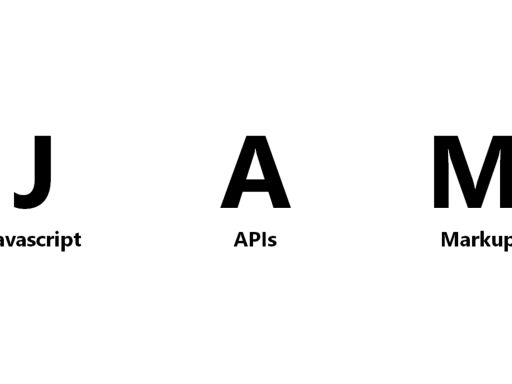In the ever-evolving world of web development, performance is a critical factor that can make or break the success of a web application. As users expect faster and more responsive experiences, developers are continually seeking ways to optimize their applications. Enter WebAssembly (Wasm), a game-changing technology that promises significant performance boosts for web apps. In this comprehensive guide, we’ll explore what WebAssembly is, how it works, and how you can leverage it to supercharge your web applications.
Table of Contents
- Introduction to WebAssembly
- Why WebAssembly Matters
- How WebAssembly Works
- Setting Up WebAssembly
- Integrating WebAssembly with JavaScript
- Use Cases for WebAssembly
- Performance Benefits of WebAssembly
- Challenges and Considerations
- Future of WebAssembly
- Conclusion
Introduction to WebAssembly
What is WebAssembly?
WebAssembly, often abbreviated as Wasm, is a low-level binary format designed to run code efficiently on the web. It provides a compilation target for high-level languages like C, C++, and Rust, enabling them to run in the browser with near-native performance.
History and Evolution
WebAssembly was introduced in 2015 by a consortium of major browser vendors, including Mozilla, Google, Microsoft, and Apple. It became a W3C recommendation in 2019, signaling its maturity and widespread adoption.
Why WebAssembly Matters
Performance
WebAssembly is designed for high performance, enabling computationally intensive tasks to be executed at near-native speed. This makes it ideal for applications like games, video editing, and scientific simulations.
Language Interoperability
With WebAssembly, you can write code in languages other than JavaScript and run it in the browser. This opens up new possibilities for developers who prefer languages like Rust, C++, or even Python.
Security
WebAssembly operates within the same security sandbox as JavaScript, ensuring that it adheres to the web’s security model. This means you can leverage its performance benefits without compromising security.
How WebAssembly Works
Compilation
WebAssembly code is compiled from high-level languages into a binary format that can be executed by the browser’s JavaScript engine. This process involves several steps:
- Source Code: Write code in a language like C or Rust.
- Compilation: Use a compiler to generate WebAssembly binary (.wasm) files.
- Execution: Load and execute the WebAssembly module in the browser.
Integration with JavaScript
WebAssembly modules can be imported and used in JavaScript code, allowing for seamless integration between Wasm and existing web technologies.
Setting Up WebAssembly
Prerequisites
- A compiler that supports WebAssembly (e.g., Emscripten for C/C++, Rust compiler).
- A modern web browser that supports WebAssembly (most current browsers do).
Writing Your First WebAssembly Module
Let’s walk through a simple example of setting up a WebAssembly module using Rust.
Step 1: Install Rust and wasm-pack
First, you’ll need to install Rust and wasm-pack, a tool that simplifies the process of building and packaging Rust code for WebAssembly.
curl --proto '=https' --tlsv1.2 -sSf https://sh.rustup.rs | sh
cargo install wasm-packStep 2: Create a New Rust Project
Create a new Rust project using Cargo, the Rust package manager.
cargo new wasm-example
cd wasm-exampleStep 3: Write Rust Code
Edit the src/lib.rs file to include the following code:
use wasm_bindgen::prelude::*;
#[wasm_bindgen]
pub fn greet() -> String {
"Hello, WebAssembly!".to_string()
}Step 4: Build the WebAssembly Module
Use wasm-pack to build the WebAssembly module.
wasm-pack buildStep 5: Integrate with JavaScript
Create an HTML file and a JavaScript file to load and use the WebAssembly module.
<!-- index.html -->
<!DOCTYPE html>
<html>
<head>
<title>WebAssembly Example</title>
</head>
<body>
<h1 id="greeting"></h1>
<script type="module">
import init, { greet } from './pkg/wasm_example.js';
async function run() {
await init();
document.getElementById('greeting').innerText = greet();
}
run();
</script>
</body>
</html>Integrating WebAssembly with JavaScript
Loading WebAssembly Modules
WebAssembly modules can be loaded and executed using JavaScript’s WebAssembly API. Here’s a simple example:
fetch('module.wasm')
.then(response => response.arrayBuffer())
.then(bytes => WebAssembly.instantiate(bytes))
.then(results => {
console.log('WebAssembly module loaded', results);
});Calling WebAssembly Functions from JavaScript
Once the WebAssembly module is loaded, you can call its exported functions directly from JavaScript.
const { instance } = await WebAssembly.instantiateStreaming(fetch('module.wasm'));
console.log(instance.exports.greet()); // Call the WebAssembly functionUse Cases for WebAssembly
High-Performance Web Applications
WebAssembly is ideal for applications that require intensive computations, such as:
- Games: High-performance graphics and physics simulations.
- Video Processing: Real-time video encoding and editing.
- Scientific Computations: Complex mathematical calculations and simulations.
Porting Existing Applications
WebAssembly allows developers to port existing applications written in languages like C++ and Rust to the web with minimal effort. This is particularly useful for legacy applications that need to be made accessible via the browser.
Enhancing JavaScript Applications
WebAssembly can be used to offload performance-critical parts of a JavaScript application, resulting in significant performance improvements.
Performance Benefits of WebAssembly
Near-Native Performance
WebAssembly’s binary format is designed for fast parsing and execution, allowing it to run at near-native speed. This makes it significantly faster than JavaScript for compute-intensive tasks.
Efficient Memory Usage
WebAssembly provides a linear memory model that enables efficient memory management, reducing overhead and improving performance.
Reduced Load Times
WebAssembly’s compact binary format results in smaller file sizes compared to equivalent JavaScript code, leading to faster load times.
Challenges and Considerations
Learning Curve
While WebAssembly offers powerful capabilities, it also comes with a learning curve, especially for developers unfamiliar with languages like Rust or C++.
Debugging
Debugging WebAssembly code can be more challenging than debugging JavaScript, as it requires a different set of tools and techniques.
Integration Complexity
Integrating WebAssembly with existing JavaScript codebases may require additional effort, particularly for large and complex applications.
Future of WebAssembly
Evolving Standards
The WebAssembly standard is continuously evolving, with new features and improvements being added regularly. Future enhancements may include support for multi-threading, garbage collection, and more.
Broader Adoption
As more developers recognize the benefits of WebAssembly, its adoption is expected to grow, leading to a broader ecosystem of tools, libraries, and frameworks.
Expanding Use Cases
WebAssembly’s potential extends beyond the web, with possible applications in areas such as server-side computing, IoT, and even blockchain technology.
Conclusion
WebAssembly is a powerful technology that can significantly boost the performance of your web applications. By enabling high-level languages to run in the browser with near-native speed, WebAssembly opens up new possibilities for web development. Whether you’re building high-performance games, porting existing applications, or enhancing JavaScript code, WebAssembly provides the tools you need to deliver fast, responsive, and efficient web experiences.
Stay ahead of the curve by exploring the potential of WebAssembly in your projects. For more detailed resources and updates, visit the official WebAssembly website and join the growing community of developers harnessing the power of WebAssembly.
By embracing WebAssembly, you can take your web applications to the next level, delivering unparalleled performance and user satisfaction. Happy coding!





